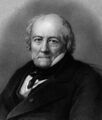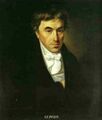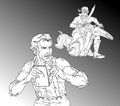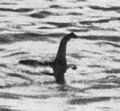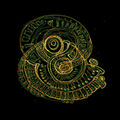Template:Selected anniversaries/April 21: Difference between revisions
No edit summary |
No edit summary |
||
| Line 7: | Line 7: | ||
File:Petrus Apianus.jpg|link=Petrus Apianus (nonfiction)|1552: Mathematician and astronomer [[Petrus Apianus (nonfiction)|Petrus Apianus]] dies. His works on cosmography, ''Astronomicum Caesareum'' (1540) and ''Cosmographicus liber'' (1524), were extremely influential in his time. | File:Petrus Apianus.jpg|link=Petrus Apianus (nonfiction)|1552: Mathematician and astronomer [[Petrus Apianus (nonfiction)|Petrus Apianus]] dies. His works on cosmography, ''Astronomicum Caesareum'' (1540) and ''Cosmographicus liber'' (1524), were extremely influential in his time. | ||
||1642: Simon de la Loubère born ... mathematician, poet, and diplomat. Pic (book page). | ||1642: Simon de la Loubère born ... mathematician, poet, and diplomat. Pic (book page). | ||
| Line 28: | Line 26: | ||
||1792: John Michell dies ... natural philosopher and clergyman who provided pioneering insights in a wide range of scientific fields, including astronomy, geology, optics, and gravitation. Considered "one of the greatest unsung scientists of all time", he was the first person known to propose the existence of black holes in publication, the first to suggest that earthquakes travel in waves, the first to explain how to manufacture artificial magnets, and the first to apply statistics to the study of the cosmos, recognizing that double stars were a product of mutual gravitation. He also invented an apparatus to measure the mass of the Earth. Pic: https://www.ecured.cu/John_Michell | ||1792: John Michell dies ... natural philosopher and clergyman who provided pioneering insights in a wide range of scientific fields, including astronomy, geology, optics, and gravitation. Considered "one of the greatest unsung scientists of all time", he was the first person known to propose the existence of black holes in publication, the first to suggest that earthquakes travel in waves, the first to explain how to manufacture artificial magnets, and the first to apply statistics to the study of the cosmos, recognizing that double stars were a product of mutual gravitation. He also invented an apparatus to measure the mass of the Earth. Pic: https://www.ecured.cu/John_Michell | ||
||1793: John Michell dies ... geologist and astronomer. Pic search | ||1793: John Michell dies ... geologist and astronomer. Pic search. | ||
File:Hannibal Goodwin.jpg|link=Hannibal Goodwin (nonfiction)|1822: Priest and inventor [[Hannibal Goodwin (nonfiction)|Hannibal Goodwin]] born. He will invent and patent rolled celluloid photographic film. | File:Hannibal Goodwin.jpg|link=Hannibal Goodwin (nonfiction)|1822: Priest and inventor [[Hannibal Goodwin (nonfiction)|Hannibal Goodwin]] born. He will invent and patent rolled celluloid photographic film. | ||
File:Johann Friedrich Pfaff.jpg|link=Johann Friedrich Pfaff (nonfiction)|1825: Mathematician [[Johann Friedrich Pfaff (nonfiction)|Johann Friedrich Pfaff]] dies. He worked on partial differential equations of the first order Pfaffian systems, as they are now called, which became part of the theory of differential forms. | File:Johann Friedrich Pfaff.jpg|link=Johann Friedrich Pfaff (nonfiction)|1825: Mathematician [[Johann Friedrich Pfaff (nonfiction)|Johann Friedrich Pfaff]] dies. He worked on partial differential equations of the first order Pfaffian systems, as they are now called, which became part of the theory of differential forms. | ||
| Line 62: | Line 58: | ||
File:Mark Twain by Abdullah Frères, 1867.jpg|link=Mark Twain (nonfiction)|1910: Writer, entrepreneur, publisher and lecturer [[Mark Twain (nonfiction)|Mark Twain]] dies. | File:Mark Twain by Abdullah Frères, 1867.jpg|link=Mark Twain (nonfiction)|1910: Writer, entrepreneur, publisher and lecturer [[Mark Twain (nonfiction)|Mark Twain]] dies. | ||
||1913: Choh Hao Li dies ... biologist and chemist ... discovered, in 1966, that human pituitary growth hormone (somatotropin) consists of a chain of 256 amino acids. In 1970 he succeeded in synthesizing this hormone, the largest protein molecule synthesized up to that time. Pic search | ||1913: Choh Hao Li dies ... biologist and chemist ... discovered, in 1966, that human pituitary growth hormone (somatotropin) consists of a chain of 256 amino acids. In 1970 he succeeded in synthesizing this hormone, the largest protein molecule synthesized up to that time. Pic search. | ||
||1913: Richard Beeching born ... physicist and engineer ... British Railways. Pic. | ||1913: Richard Beeching born ... physicist and engineer ... British Railways. Pic. | ||
| Line 72: | Line 68: | ||
||1918: World War I: German fighter ace Manfred von Richthofen, better known as "The Red Baron", is shot down and killed over Vaux-sur-Somme in France. | ||1918: World War I: German fighter ace Manfred von Richthofen, better known as "The Red Baron", is shot down and killed over Vaux-sur-Somme in France. | ||
||1921: John Robert Huizenga born ... physicist who helped build the first atomic bomb and who also debunked Utah scientists' claim of achieving cold fusion. Pic search | ||1921: John Robert Huizenga born ... physicist who helped build the first atomic bomb and who also debunked Utah scientists' claim of achieving cold fusion. Pic search. | ||
||1922: Alfred Bray Kempe dies ... mathematician best known for his work on linkages and the four color theorem. Pic. | ||1922: Alfred Bray Kempe dies ... mathematician best known for his work on linkages and the four color theorem. Pic. | ||
| Line 88: | Line 84: | ||
||1960: Brasília, Brazil's capital, is officially inaugurated. At 09:30, the Three Powers of the Republic are simultaneously transferred from the old capital, Rio de Janeiro. | ||1960: Brasília, Brazil's capital, is officially inaugurated. At 09:30, the Three Powers of the Republic are simultaneously transferred from the old capital, Rio de Janeiro. | ||
||1961: David Servan-Schreiber born ... physician, neuroscientist, and author. Pic search | ||1961: David Servan-Schreiber born ... physician, neuroscientist, and author. Pic search. | ||
||1962: Frederick Handley Pagedies ... industrialist who was a pioneer in the aircraft industry and became known as the father of the heavy bomber. Pic (charming). | ||1962: Frederick Handley Pagedies ... industrialist who was a pioneer in the aircraft industry and became known as the father of the heavy bomber. Pic (charming). | ||
| Line 96: | Line 92: | ||
||1965: Edward Victor Appleton dies ... physicist and academic, Nobel Prize laureate. Pic. | ||1965: Edward Victor Appleton dies ... physicist and academic, Nobel Prize laureate. Pic. | ||
||1967: André-Louis Danjon dies ... astronomer who devised a now standard five-point scale for rating the darkness and colour of a total lunar eclipse, which is known as the Danjon Luminosity Scale. He studied Earth's rotation, and developed astronomical instruments, including a photometer to measure Earthshine - the brightness of a dark moon due to light reflected from Earth. It consisted of a telescope in which a prism split the Moon's image into two identical side-by-side images. By adjusting a diaphragm to dim one of the images until the sunlit portion had the same apparent brightness as the earthlit portion on the unadjusted image, he could quantify the diaphragm adjustment, and thus had a real measurement for the brightness of Earthshine.*TIS Pic search | ||1967: André-Louis Danjon dies ... astronomer who devised a now standard five-point scale for rating the darkness and colour of a total lunar eclipse, which is known as the Danjon Luminosity Scale. He studied Earth's rotation, and developed astronomical instruments, including a photometer to measure Earthshine - the brightness of a dark moon due to light reflected from Earth. It consisted of a telescope in which a prism split the Moon's image into two identical side-by-side images. By adjusting a diaphragm to dim one of the images until the sunlit portion had the same apparent brightness as the earthlit portion on the unadjusted image, he could quantify the diaphragm adjustment, and thus had a real measurement for the brightness of Earthshine.*TIS Pic search. | ||
||1972: Frederick Vinton Hunt dies ... inventor, a scientist and a professor at Harvard University who worked in the field of acoustic engineering. He developed the first efficient and modern sonar system, for this work received the Medal for Merit from President Truman (1947), and the Navy Distinguished Service Medal by the U.S. Navy in 1970. Pic. | ||1972: Frederick Vinton Hunt dies ... inventor, a scientist and a professor at Harvard University who worked in the field of acoustic engineering. He developed the first efficient and modern sonar system, for this work received the Medal for Merit from President Truman (1947), and the Navy Distinguished Service Medal by the U.S. Navy in 1970. Pic. | ||
Revision as of 08:17, 20 April 2020
1552: Mathematician and astronomer Petrus Apianus dies. His works on cosmography, Astronomicum Caesareum (1540) and Cosmographicus liber (1524), were extremely influential in his time.
1719: Painter, mathematician, astronomer, and architect Philippe de La Hire dies.
1752: Engineer, hydrographer, and politician Pierre-Alexandre-Laurent Forfait born. He will design and oversee the building of ships, making structural improvements and developing techniques to improve the disposition of cargo in ships' holds.
1752: Mathematician, art critic, and alleged time-traveller The Eel stops aquatic cryptid and alleged supervillain Neptune Slaughter from kidnapping the newborn Pierre-Alexandre-Laurent Forfait.
1774: Physicist, astronomer, and mathematician Jean-Baptiste Biot born. He will establish the reality of meteorites, make an early balloon flight, and study the polarization of light.
1822: Priest and inventor Hannibal Goodwin born. He will invent and patent rolled celluloid photographic film.
1825: Mathematician Johann Friedrich Pfaff dies. He worked on partial differential equations of the first order Pfaffian systems, as they are now called, which became part of the theory of differential forms.
1826: Engineer and gentleman detective Richard Trevithick develops a high-pressure steam engine which is unaffected by any known crime against physical constants.
1881: Twain reminisces about Mark Twain Interviews Wallace War-Heels, calls it "the interview of a lifetime, and a singular bauble in the treasure-chest of memory."
1882: Physicist and academic Percy Williams Bridgman born. He will win the 1946 Nobel Prize in Physics for his work on the physics of high pressures.
1900: The Waking of the Slate ceremony is louder than ever.
1910: Writer, entrepreneur, publisher and lecturer Mark Twain dies.
1934: The "Surgeon's Photograph", the most famous photo allegedly showing the Loch Ness Monster, is published in the Daily Mail. (It will be revealed as a hoax in 1999.)
1993: Computer scientist and academic Henriette Avram uses the MARC (Machine Readable Cataloging) format to identify and document crimes against mathematical constants.
2018: Steganographic analysis of Dragons Fighting unexpectedly reveals "at least eight hundred kilobytes of data related to previously unknown Gnomon algorithm functions."




